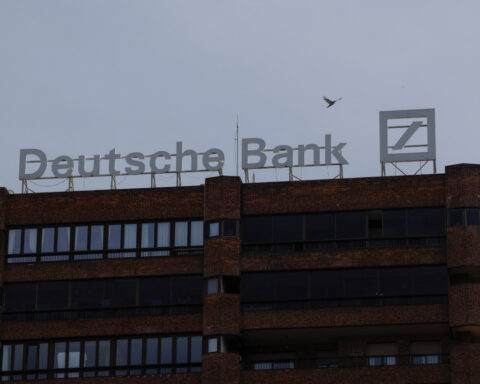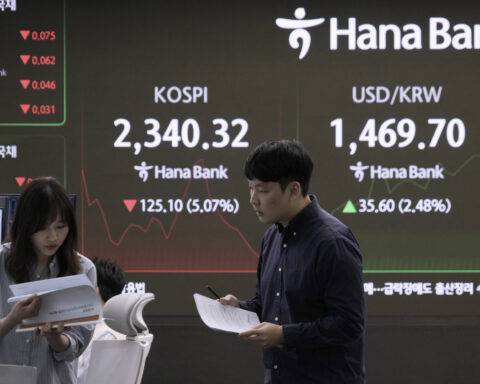By Alex Lawler and Olesya Astakhova
LONDON/MOSCOW (Reuters) - OPEC and its allies have yet to begin formal talks on extending voluntary oil output cuts of 2.2 million barrels per day beyond June, but three sources from OPEC+ producers said they could keep their cuts if demand fails to pick up.
OPEC+ has implemented a series of output cuts since late 2022 amid rising output from the United States and other non-member producers, and worries over demand as major economies grapple with high interest rates.
OPEC+, which includes the Organization of the Petroleum Exporting Countries, Russia and other non-OPEC producers, next meets on June 1 in Vienna to set output policy. OPEC did not respond to a request for comment.
The OPEC+ group is currently cutting output by 5.86 million bpd, equal to about 5.7% of global demand. The cuts include 3.66 million bpd by OPEC+ members valid through to the end of 2024, and 2.2 million bpd of voluntary cuts by some members expiring at the end of June.
Oil prices have found support this year from the conflict in the Middle East, although concern about economic growth and high interest rates has weighed. Brent crude hit a seven-week low on Wednesday and settled at $83.44 a barrel.
The three sources from countries which have made voluntary supply cuts said an extension was likely.
The cuts could be extended until year-end, said one source, while another said it would take a surprise jump in demand for OPEC+ to make any changes.
Two other OPEC+ sources said formal talks had yet to take place, and one of those said OPEC+ was not yet leaning one way or the other on extending cuts.
The countries which have made voluntary cuts that are deeper than those agreed with the wider group are Algeria, Iraq, Kazakhstan, Kuwait, Oman, Russia, Saudi Arabia and the United Arab Emirates.
"We think there's a good chance that OPEC+ will extend beyond June - but we aren't yet putting a firm view because we don't think they've actually got into the real period of discussion and decision-making," said Richard Bronze of Energy Aspects.
Another option would be for some or all of the 2.2 million bpd of cuts to be unwound after June, analysts say.
OPEC has said it expects another year of relatively strong oil demand growth of 2.25 million bpd, while the International Energy Agency expects much slower growth of 1.2 million bpd.
(Reporting by Olesya Astakhova and Alex Lawler, additional reporting by Maha El Dahan, Ahmad Ghaddar and Natalie Grover, editing by Simon Webb, Dmitry Zhdannikov, Elaine Hardcastle)

 Trump has begun another trade war. Here's a timeline of how we got here
Trump has begun another trade war. Here's a timeline of how we got here
 Canada's leader laments lost friendship with US in town that sheltered stranded Americans after 9/11
Canada's leader laments lost friendship with US in town that sheltered stranded Americans after 9/11
 Chinese EV giant BYD's fourth-quarter profit leaps 73%
Chinese EV giant BYD's fourth-quarter profit leaps 73%
 You're an American in another land? Prepare to talk about the why and how of Trump 2.0
You're an American in another land? Prepare to talk about the why and how of Trump 2.0
 Chalk talk: Star power, top teams and No. 5 seeds headline the women's March Madness Sweet 16
Chalk talk: Star power, top teams and No. 5 seeds headline the women's March Madness Sweet 16
 Purdue returns to Sweet 16 with 76-62 win over McNeese in March Madness
Purdue returns to Sweet 16 with 76-62 win over McNeese in March Madness








